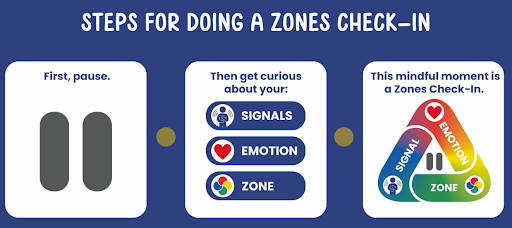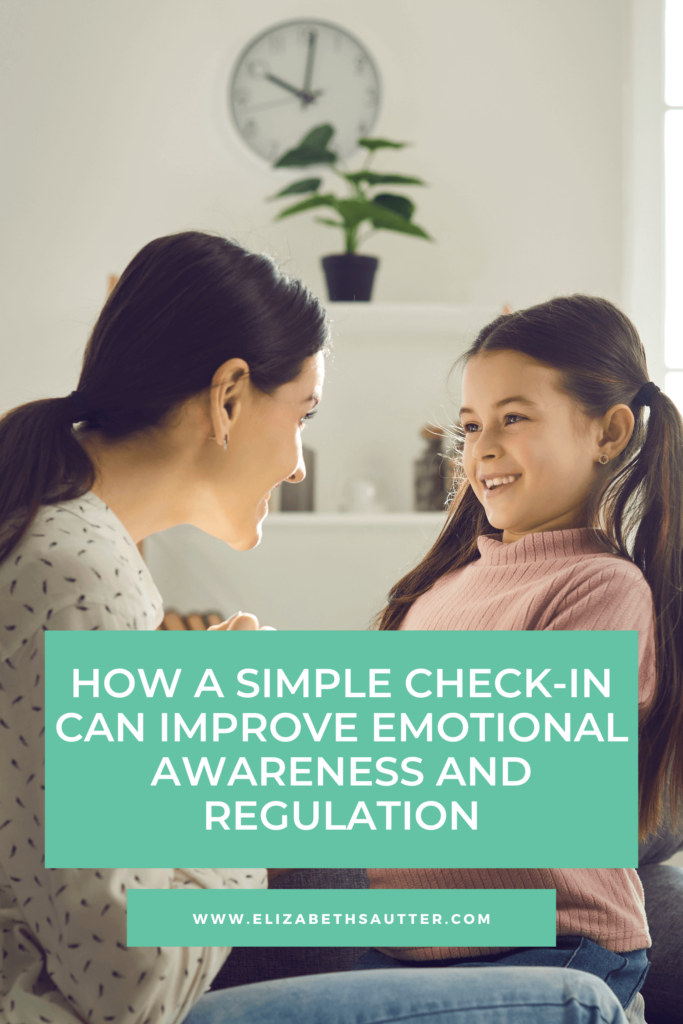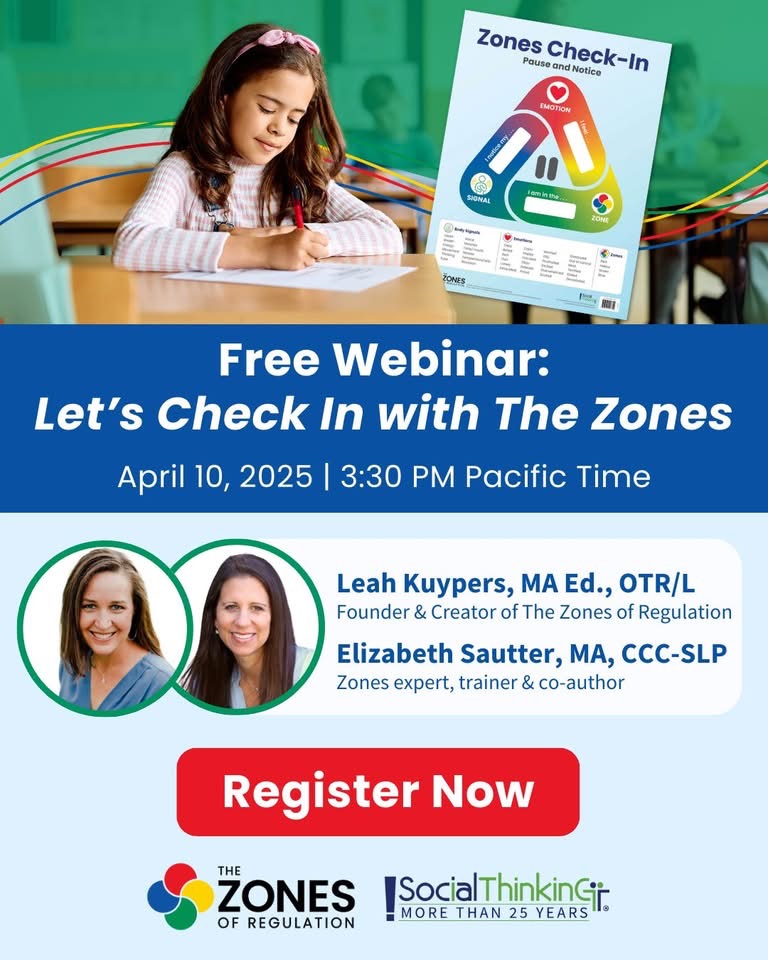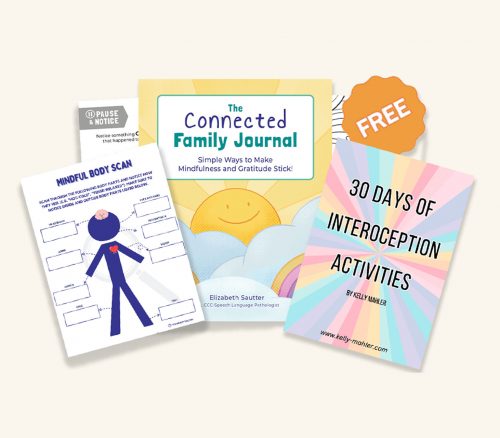Helping children regulate starts with awareness—recognizing body signals to support regulation. But for many kids, noticing sensations like hunger, fatigue, or frustration isn’t always easy, making it more difficult to regulate and navigate their emotions.
By strengthening interoception and using The Zones of Regulation® Check-In, we can help children tune into their bodies and emotions. Join our FREE webinar to learn practical ways to incorporate check-ins into daily routines!
Why Sensory & Emotional Regulation Starts with Awareness
Before we can support children in navigating emotions and behaviors, it’s important to help them recognize what’s happening in their bodies.
Dr. Dan Siegel emphasizes that being able to identify our feelings helps us manage them, often using the phrase “Name it to tame it.” But if a child struggles to notice body signals, they may not recognize their emotions—or use a regulation strategy—until they are already overwhelmed.
This is why The Zones of Regulation® framework starts with noticing—pausing to tune into body signals and sensations before identifying a Zone or choosing a tool. This step is often missed, yet it’s essential for developing emotional awareness, flexibility, and resilience.
What is Interoception & Why Is It Important?
Interoception is the body’s internal sensory system that helps us understand and respond to what’s happening inside of us. It gathers information from the heart, lungs, stomach, muscles, and skin to help us recognize sensations like hunger, thirst, temperature, and emotional shifts.
However, not every child experiences interoceptive signals the same way:
- Some children experience body signals intensely. A student might struggle to focus during class because they feel every tiny stomach sensation and worry they are hungry. Another may refuse to wear socks because they can’t ignore the seams pressing against their toes.
- Other children may not easily notice body signals. A child at home may suddenly become overwhelmed because they haven’t eaten for hours but never felt hungry. Another might not realize they have to use the bathroom until it’s urgent.
For example, I worked with a student who became irritable every morning but didn’t recognize that their stomach was empty. Once they began checking in with their body earlier in the day, they started recognizing hunger cues sooner and could grab a snack before frustration set in.

Using a Check-In to Strengthen Awareness & Regulation
A Check-In is a simple way for children to pause, notice body sensations, and identify their emotions to support their regulation.

Used with permission from The Zones of Regulation(R) Digital Curriculum, Kuypers (2024). All rights reserved.
First we Pause….Mindfulness is The First Step Toward Regulation
A mindful pause before reacting, gives a moment to recognize body signals earlier, and make intentional choices.
Join us in the webinar to learn how to make mindfulness part of daily routines! A mindful pause before reacting, gives a moment to recognize body signals earlier, and make intentional choices.
Then we get curious about our:
- Body Signals
A student who gets distracted during morning circle time might pause and realize their hands feel cold and their shoulders are tense—signs of nervousness.
- Emotion
A child who becomes wiggly before recess might recognize that butterflies in their stomach mean excitement.
- Zone
The Zones of Regulation® framework uses four color-coded Zones to help children categorize how they feel in a way that is simple and easy to communicate:








A child who feels sluggish after lunch might recognize they are in the Blue Zone and can move their body to feel more alert. Another who feels jittery before a test may realize they are in the Yellow Zone and take a few deep breaths to prepare.
Making Awareness More Concrete & Visual
Since interoception and emotions are abstract, making them visual and relatable helps children connect the dots.



FREE Everyday Interoception Kit: Tools to Support Sensory & Emotional Growth




Perfect for home, school, or therapy settings!
Join Our Upcoming Webinar: Let’s Check In with The Zones
Want to learn how to make check-ins simple, natural, and effective in therapy, the classroom, or at home? Join our FREE webinar, hosted by Social Thinking Publishing, where we’ll explore:









